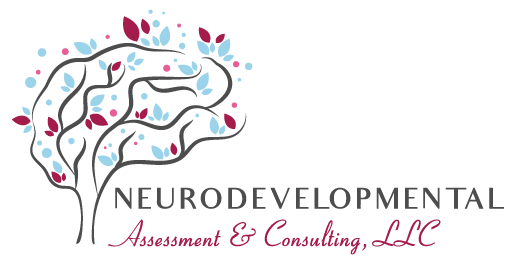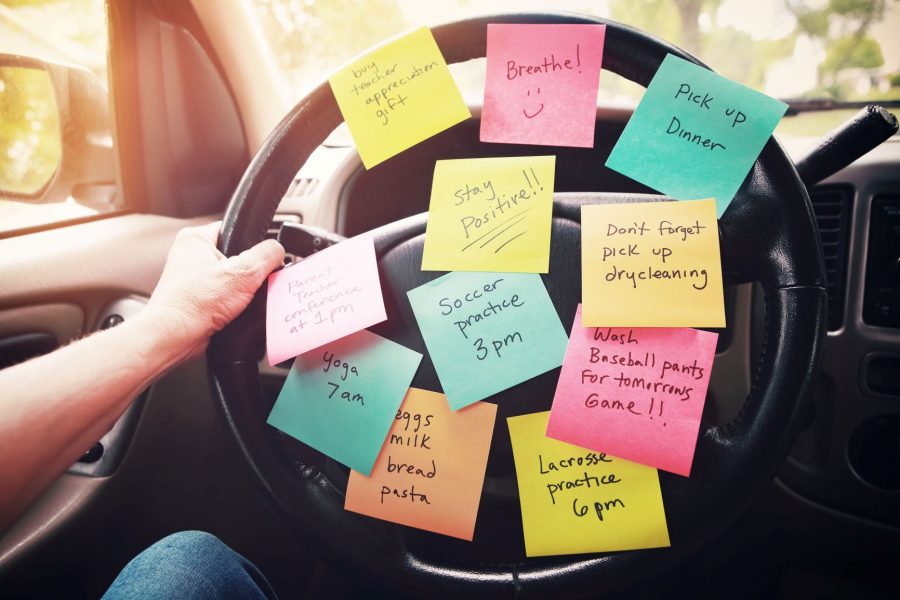Often overlooked and under-rated, breaks are a critical and essential component of reaching your potential
Breaks are an extremely important, though often undervalued, component of education, work, and mental health. Far too often, “being productive” is viewed as constant busy-ness, an immediate response to any issue that comes up (regardless of urgency or importance), and a never-ending to-do list of tasks that need to be completed. Unstructured, unscheduled “down-time” is viewed as time wasted and something to be avoided. However, this non-stop culture of doing and rushing contributes to a number of adverse outcomes, including increased stress and anxiety, decreased physical health, higher rates of burnout, and an increase in maladaptive coping skills (such as addictions and compulsive and impulsive behaviors). Being constantly connected to social media or work through electronic devices begins to blur boundaries and contributes to feelings of pressure, overwhelm, and, ironically, disconnection. When you are always striving for the next thing, you lose the security of feeling grounded and the creative and innovative ways of thinking that are found when you allow your mind more freedom and flexibility. Additionally, the lack of breaks means that you actually have to work harder to learn and to complete tasks because your approach tends to be more haphazard and lacking in focused direction. And so, you begin to perpetuate a cycle of constant doing, rather than leading a life with clarity, intention, and purpose.
The Neurobiology of Breaks in Learning
From a biological perspective, your brain requires time to consolidate newly-learned information. As much as you may think that you can just keep pushing more and more information into your brain, neuroscience has shown that there is a limit to the capacity to learn new information. This limit is individualized and occurs along a spectrum: some people will find that they can sustain their effort over a longer period of time or can hold more new information in mind at once than others, but all of our brains eventually reach a limit. And the limit also varies within an individual, depending on their interest in the material, motivation, physical state (such as level of alertness, whether you are hungry or tired), level of stress, and other factors related to the individual or the environment. Think of experiences where your learning was at its peak; it was most likely because the material was highly interesting and engaging, you were well-fed and well-rested, your level of stress was at a manageable level, you had some previous relevant knowledge or experience to relate the new information to, and the material was taught in a way that resonated with how you learn. In these situations, you learned the material with relatively little effort and it was retained over time much more easily and effectively. In contrast, recall times when your learning was negatively impacted by one of the above factors and when you had to exert much more effort in order to learn effectively. In this second scenario, your “limit” for learning new material was substantially lower. Thus, the limit of how much new material you can learn at once can vary depending on a number of conditions and situations.
Once you’ve reached your limit, additional efforts to acquire more information are likely to be ineffective until your brain has had the chance to consolidate the newly-learned information. And what is the best way to consolidate newly-learned information? Engaging in an unrelated activity. In fact, studies have shown that sleep is one of the most effective methods of consolidating information, as it reduces additional stimulation and input to the brain and allows the brain the time needed to consolidate the new information. But sleep is certainly not the only way to consolidate new information. Exercising, getting a drink of water or a snack, engaging in mindfulness activities or meditation, socializing with others, or shifting to a different activity are all ways of giving your brain a “break” from what you are learning and provide an opportunity for consolidation. In fact, learning new material tends to be much more effective if short breaks are interspersed at regular intervals rather than attempting to sustain attention, effort, and engagement over extended periods of time. The need for breaks takes on even more importance if you have difficulties with sustained attention, processing speed, and executive functioning, as these challenges often require additional energy and effort to manage when learning new material.
Effects of Breaks on Mental Health
Breaks are not only important for learning; they are also essential for mental health and well-being. Poorly defined personal and professional boundaries contribute to increased levels of stress, anxiety, and depression. You may find that you are more emotionally reactive and impulsive. You begin to lose some of the ability to make choices about your emotions and behavior and consider the longer-term implications of your reactions.
The pressure and stress of operating at a frantic pace without any down-time coupled with the guilt-laden feelings associated with taking a break can lead to declines in both physical and mental health. Rather than seeing breaks as opportunities to care for our physical and emotional health, they are seen as signs of weakness and missed opportunities to do more or get ahead. But the hidden irony is that the lack of focus on self-care results in decreased efficiency, productivity, and effectiveness, as well as a reduction in coping skills. If you keep filling your cup with more pressure, demands, responsibilities, and obligations, it will eventually spill over in ways that are unintended and possibly harmful. The key to managing stress is not to strive toward the impossible goal of eliminating all sources of stress, but to take the time and make the effort to both reduce and manage stress as much as possible. The saying, “An ounce of prevention is worth a pound of cure,” is completely applicable here; in many situations (though certainly not all), you can much more effectively reduce stress when it is at a low level, and possibly prevent, or at least reduce, further escalation and worsening of the situation.
Breaks Provide Opportunities for Creativity
When most of your time is scheduled and structured, you have little opportunity for creative and innovative thinking. When you are focused and engaged in a task, your brain tends to rely on habits, patterns, and past experiences. There is a saying among neuropsychologists that “the neurons that fire together, wire together,” which refers to the concept that the brain develops characteristic ways of responding to certain situations and scenarios. The more often you respond in the typical, expected manner, the stronger that connection becomes. Over time, your responses to repeated scenarios or situations become highly practiced and almost automatic, occurring quickly and with little effort. In many ways, this tendency is helpful; it allows you to conserve your energy for new tasks and situations and makes your problem-solving and behavior more efficient. Take basic math calculations, for example. When you were first learning addition, you likely had to use a lot of time and effort to solve a problem like 6 + 4. You may have had to imagine 6 objects and 4 objects and count them or get actual objects to count, such as your fingers. With practice and repetition, however, you no longer needed to exert the same amount of time, effort, and energy to solve the problem. Indeed, you then had more “brainpower” available to apply that knowledge to other situations in your life (such as making a purchase) or to use it in higher-level math procedures and computations.
Think of a time when you tried to change a habit and the amount of effort required to do so, if you were even able to do so. If you can’t think of an experience, observe how you brush your teeth in the morning. You probably start on the same side every time and move about your mouth in the same general pattern. Once you know your pattern, try to change it in some way and notice the difference in the amount of effort you need. Try to brush with the opposite hand or start on the other side of your mouth, for example. These slight changes tax your brain in a new way and require increased effort, attention, and focus to do.
All of this efficiency and energy conservation comes at the expense of creativity and novel problem-solving. In general, this level of automaticity is a good thing; think of how difficult it would be to get through the day if you had to start fresh each and every day and figure out how to do everything that you normally do automatically. At the same time, you can probably think of experiences where you had a sudden burst of inspiration or clarity when you were engaged in another activity, such as taking a shower or falling asleep. The brain needs time and space to think creatively and flexibly; when you are constantly going from one task or activity to another, you don’t allow leave any space for that creativity. The result is you end up stuck in a pattern or habit with little understanding of how you got there and how to get out. Taking breaks allows you to reflect and think about things in new ways.
Building Breaks into Your Routine
The above-stated reasons have hopefully convinced you that breaks are extremely powerful, essential, and critical to learning, mental health, and creativity. Incorporating breaks into your day can improve productivity, focus, stress management, and problem-solving. But in a culture that emphasizes constant connection and availability, how do you start? What do you do? Here are a few suggestions to get started:
- Set clear boundaries. With all of the connection through electronic devices and social media, there is a constant pull toward a loosening of boundaries. Checking and responding to work email after hours or on weekends, posting highly-personal information online, or getting sucked into scrolling through social media news feeds are all examples of activities that reflect weakened boundaries between work and home life and our public and private selves. Try setting specific times or time limits around some of these activities (e.g., only responding to work emails during working hours or limiting the amount of times you check social media). Need more help? Try using apps that block notifications from these apps during times that you set or removing certain apps from your phone altogether. If you have to actually go over to your laptop and turn it on to check your work email, you are less likely to just check it “really quick” when you are not in front of the laptop.
- Schedule your breaks. Treat your breaks like any other appointment. Block out the time in your calendar to exercise, meditate, write in your journal, socialize with friends, etc. and protect that time like you do other responsibilities and obligations. By protecting this time, you are setting the intention that this activity is a priority for you and is just as important as your other activities. If you absolutely have to change it, reschedule it to another time, rather than removing it from your schedule altogether.
- Set a timer. When you have to work on an activity for an extended period of time, set a timer both for the time you are expecting to work and for the break time. Remember that the amount of time you can work on something is likely to vary, as will the number of breaks you require and how long they need to be. For things that are interesting and engaging to you, you may be able to work for a longer period of time, followed by a shorter break (e.g., 45-60 minutes of work followed by a 10-minute break). For activities that are more challenging or less interesting, you may find that you need to substantially reduce the amount of work time that occurs before a break (e.g., 15 minutes of work followed by a 5-minute break).
- Start small. Finding the time for breaks can be challenging at first, especially when you are feeling overwhelmed by all of your responsibilities and obligations. However, as mentioned earlier, it is very likely that some of your responsibilities and obligations are taking longer because they are not being done efficiently because you are not allowing yourself breaks (remember the cycle?). You have to start somewhere. Start with an activity that you can complete in 5-10 minutes and then find that time during your day. Set a goal of consistency in setting aside 5-10 minutes per day, rather than increasing the amount of time. For example, perhaps your initial goal is to take a 10-minute walk in your neighborhood after work, 3 days per week. Do not add additional time or days until you are consistently meeting that goal and if you’re not meeting that goal, take the opportunity to re-evaluate it and determine whether it is realistic or if you need to make other changes.
- Develop a mindfulness practice. I consider mindfulness to be a way of training your brain to be calm and still, taking a break from the pressure and pace of daily life, and managing stress and anxiety. It is a powerful way of taking a break physically, cognitively, and emotionally that allows for greater clarity in thinking and purpose and intention in actions and behaviors. While silent meditation is one mindfulness approach, it is certainly not the only one. It is important to find the one that works for you, whether it is yoga, mindful walking, listening to calming music, or doing a guided meditation. Consistency is key here, too, in that it is important to regularly engage in the mindfulness activity you’ve chosen, rather than only engaging in it when you feel stressed and overwhelmed. There are a number of apps and resources available to help you start and maintain a mindfulness practice.




